“Long ago,” Sinha began, “There was a race of beings that coexisted with humans. These beings were not called ‘Gods’ for they were not the creators or rulers of any world. The only sway they held was over certain realms within their own world, as leaders or representatives. Over thousands of years, these beings evolved over time and as they became wiser, their needs expanded.”
“They began to harness fire and produce lighting, they conquered all the seas and controlled the rains, their stone palaces had an equal amount of metal streaming through them and they could produce their own breathable air, at the cost of nature. Everything was destroyed and recreated with their vision in mind. But their abode did not have limitless resources.”
As Sinha spoke, he carved a perfect circle on the surface of the wooden table with his nail.
This seemed to be another origin story similar to that of the Order of Sal Degnum. I have been to the cathedrals where the high priest goes over the journey and events that defined our species. Whenever I was in such a setting, I would avoid listening to such dribble; however, over the years a few passages remained etched in my memory as I had shadowed so many to and from these places of worship.
“However,” Sinha turned to me, “it was not just the environment around them that changed. They looked inward and desired immortality, agelessness, eternal wisdom and other such abilities. Greed took hold and eventually drove their creations. This led to their creating man. These people could then be called ‘creators’; and those whom they created gave them the title of ‘God’.”
“These ‘creators’ that hold a place above us, are known as the ‘Satya-jun’. In other faiths, they are termed ‘Gods’.”
I had to confirm if he was actually claiming what I thought he was claiming. “You mean to say that all other faiths are wrong?”
“Not necessarily in the way they evangelise their preachings. ‘Religion’ is just a set of tenets agreed upon by a small group of people and is then spread to the masses for the purpose of establishing a hierarchy that may be controlled by man. For no man can control nature. Nature is an absolute.”
“And Sal Degnum?” I asked. That had been forced upon or sought by millions to seek answers to questions of hapless survivors of the ‘Holy Reign’.
“Sal Degnum revolves around the concept of ‘The House of Worth’ – in that one needs to be worthy to be invited into the abode of God. This abode or ‘Heaven’ does in fact exist in a form, but once again, not in the way you or they imagine it.”
“We are Saha-jun.” Sinha carved another smaller circle within the previous one. “And below us are the Tala-jun.” Sinha carved yet another circle within the second one. Now there were three concentric circles.
The smallest was that of the Tala-jun, the one bigger was the Saha-jun and the outermost circle, the Satya-jun.
I leaned back on my chair unsure about the purpose of this information. I hadn’t asked for a lesson on some exotic religion. Or was this supposed to be a teaser to unveil the identity of my target. “How does all of this relate to Moira?” I asked.
From the memories… that are somehow ingrained in my brain… I could only piece together some oddities about the woman. There was a part of me that knew she was not human and another part of me that felt she was. I had spoken to her a great number of times.
“Janasakara,” Sinha said. “Are you aware of it?”
“No.” I wasn’t even sure that I heard the word correctly.
“Ja-Na-Sa-Ka-Ra,” Sinha repeated for my sake. He raised a finger each time he sounded a syllable. With a total of five syllables, all five of his fingers were outstretched revealing his palm. “It is a way of life and practices by the people of Urubann, Rahasdun and other smaller territories around these two countries.”
“It sounds like just another religion.” I conclude.
“It is not. Faith systems like the Order of Sal Degnum are like friendship. They are gained and lost based on your actions and decisions. Moreover, it is more of an imposition unlike Janasakara. That is more like family. It is the presence that you are raised into without any intervention that moulds you a member of the respective societies.”
He must have noticed my raised eyebrow. I had neither friends nor family. In fact, most people I came across met their end by my hand.
“It’s a crude example,” Sinha said, “but that’s the best I can do in this language. Anyway Moira, like me, is known as a Scion.”
“A Scion?” I repeated. That is a word I am familiar with. It came up in the third… no, fourth conversation that I had had with Moira in the cold chamber. In many conversations she spoke in detail about Scions, Immortals and Untaimed, but I seemed to have a minor recollection of those discussions.
“Our memories aren’t perfect,” Sinha interrupted. “We were made in the image of our creators. Actually, our memories can retain all events that take place within our lifetime and can be permanent, but that would not be reflective of our flawed makers.”
That was an odd way of referring to the ‘creators’. In Sal Degnum, anyone who insults god in this manner is immediately shunned as a heathen.
“You remember the Satya-juns I mentioned?” Sinha pointed to the outermost circle. “They are the ones who created our universe. We are the Saha-juns. The mortals. The material construct that contains all living and non-living matter within the creation. And finally, the Tala-juns are what become of our souls, when not attached to the mortal coils.”
“The Satya-juns cannot interfere with our world unless it causes a chain reaction that would unbalance the entire universe. Which is why they send their avatars into the world in the form of Immortals. These Immortals can cause disruptions that can be controlled at a far more manageable and predictable level than if an all-powerful being were to raise its hand. It is the difference between sending an army to burn down the entire forest, and sending a single skilled hunter to hunt down the tiger causing trouble in the village on the outskirts.”
Now that was a comparison I understood.
“The ‘Untaimed’ on the other hand is a term coined by the Immortals as a way of distinguishing a human that is possessed by one them. That is what happened to you. For the past few months you have been possessed by an Immortal to do his bidding.”
So I was a pawn? Of all the things I had done and had been forced to do, I had never considered the idea that someone could actually do something without any control over themselves. The very thought enraged me. At least when I did the deed, I knew of the burden I had to bare.
“Scions are those in between. We are not controlled by the immortals, but share several traits with them. In some cases, we exceed the capabilities of the humans of this world and in other cases we surpass the abilities of our creators. But this does come with a caveat.”
“Caveat?” I did not know this word.
“A stipulation. A sort of condition, if you prefer. In spite of all this power we possess, we too are servants of our masters. Our purpose is to maintain the harmony of this world. Moira specifically plays an important role in maintaining the space and time in such a way that you have no idea that there is something wrong with the world around you.”
Something was wrong with the world around us?
“Imagine for a moment that, one day, an Immortal takes control of Moira and uses her abilities to disrupt the flow of space and time. We cannot risk that much power to be in the hands of any being in this reality.”
“Why?” I considered what Moira could be capable of. Could she battle entire armies? The world powers would not allow a single being to walk in and destroy them all.
“You remember the Tala-juns I just mentioned.” Sinha motioned to the innermost circle in the three-circle diagram. “The soul of those who have died and will die is saved in a sort of reservoir. A pool of souls which are sometimes used by conjurers, witches and so on, but most importantly, they are the proof that the individual existed. What do you think would happen if someone were to make it such that those people had never died in the first place?”
Sinha moved closer while I was trying to make sense of what he meant. “What if the owner, we set ablaze a moment ago, were to burst in through the door right now and point a gun at you for shooting him?”
I would find that very hard to believe. He is dead, isn’t he? Although I couldn’t help but stare at the front door and bright morning sunlight streaming in through the gaps, highlighting the door frame. I hadn’t even noticed that the crackle of the distant funeral pyre had died down. My sense of sound suddenly became attuned to hear the footsteps of anyone who crunched on the dried leaves outside the door.
What if a charred body burst in through the door… I had my gun right here. I would be able to shoot first. No… This is an absurd scenario. Then why am I even thinking about it? It was all too quiet. Was it always this silent when Sinha wasn’t speaking.
“That is why I said that she must be removed and not killed. She cannot truly die. No one can. It is but your culture and way of life outside of Janasakara where this Life and Death spiral has been embedded in the minds of people.”
“All right.” I stood up, having been fed enough information for the day. “I am getting an idea of how absurd this all is. So if you want to be one of the legendary heroes in the folk tales, could you skip to the part where I achieve what I have to do?”
I was not too pleased to know that the people I had killed may still exist in some form or the other. I had somehow begun to care very little about life. Earlier, I believed that once someone dies, it is the end of their existence. But now, if what this man said was true, death is not an end; so why must I hold on to the memories of those who I have not ‘truly ended’.
Sinha studied me from head to toe. He seemed to be clearly searching for an answer as what lay before him appeared unworthy of the task at hand.
Finally he stood up and reached into one of the pockets of his coat. “You can never go wrong with the traditional way: a weapon.”

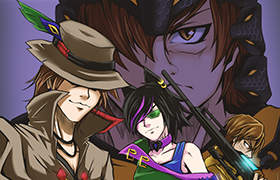
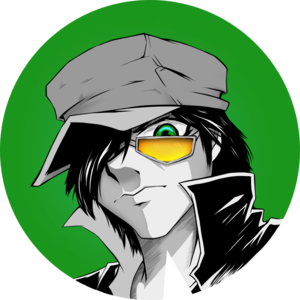
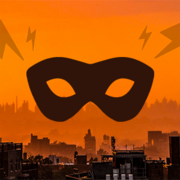
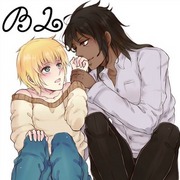
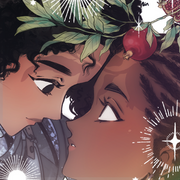


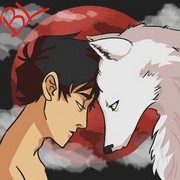
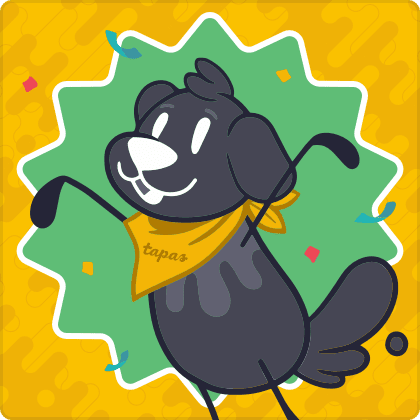
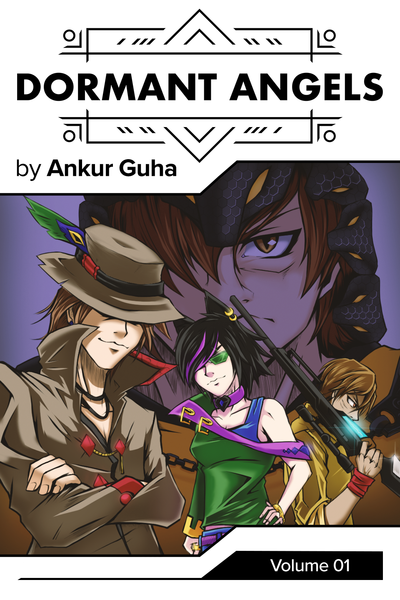
![Artificial Intelligence - Part 4 [Barik]](https://us-a.tapas.io/sa/c2/3bf95f99-7fc2-4ba3-86e5-af0013d06a91.png)
Comments (0)
See all